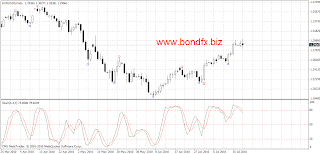Written by Thomas Long
Multiple Time Frame Analysis is the practice of analyzing a currency pair by looking at the same pair through several different time frames on charts. The advantage here is that by looking at a larger time frame, then a smaller time frame, and then an even smaller time frame, the trader is able to gain a more granular insight as to how the pair is moving and make a more informed entry into the trade.
Generally three time frames are chosen and those time frames will be based on the trader’s individual trading strategy. A trader with a longer-term perspective may choose a Weekly, a Daily, and a 4-hour chart. A much shorter-term trader might choose a 4-hour, a 1-hour, and a 15-minute chart. The key is to use the longest-term chart in the array to determine the “big picture” and the direction in which to take the trade. Then use the shorter time frames to “fine tune” where to enter positions in that direction.
You may have heard the expression “trends exist within trends”. For example, on a Daily chart, the trend may be an uptrend, while on a 4-hour chart the trend may be down and on a 1-hour chart it may be flat… all in the same pair.
In this scenario, the overriding trend is based on the Daily chart -- which is up. Within that uptrend, however, there is a retracement that is going on in the 4-hour time frame. That retracement will likely come to an end at some point and then the 4-hour time frame will come into alignment with the Daily chart. By the same token, within the 4-hour time frame there exists a trend on the 1-hour. As that 1-hour trend comes into alignment with the 4-hour and the 4-hour aligns with the Daily chart, a much higher probability entry point will likely present itself.
In a nutshell, we want to enter a trade when the smallest time frames in our array have completed a retracement (a retracement is a move against the trend we have noted on the Daily chart) and are beginning to make a fresh move in the direction of the Daily trend. That will be our entry signal.
Think of it as tumblers within a combination lock all sequentially coming into alignment.
By using several time frames, a trader can gain insight regarding a pair on three different levels and learn how to utilize that information to successfully enter a trade when the time frames present the highest probability of success.
Let’s take a look at some charts of the AUD/USD.
On the above Daily chart we can see that the pair is in an uptrend. We know, based on that fact alone, that we only want to look for buying opportunities. Since it is at the upper extremities of this bullish move, now may not be the best time to buy the pair as a retracement could be imminent.
Let’s see if looking at a lower time frame chart can shed any light on this trade.
On this 4-hour chart we can see that the pair is still in an uptrend (higher highs and higher lows) and that possibly a support level is being established at the red line on the chart. If that support level holds, a trader could take a long position at that point, since that pair would then begin to be moving back in the direction of the uptrend on the Daily chart. (If a candle closes below support, however, we would then wait for another bottom to be formed before going long.) A more conservative trader would wait to enter a long position when the pair breaks above resistance at the black line.
The key here as it relates to Multiple Time Frame Analysis is that we are using a lower time frame chart to take a more granular look at how the pair is trading before we make our entry decision.
Let’s go down to a 1-hour chart on this pair.
Looking at the 1-hour chart we can see that the support level (red) has been tested several times. This strengthens the belief that this support level may hold and may the point from which the renewed move to the upside is launched. Should price action close below support, as in the case presented on the 4-hour chart, we would then wait until a new bottom is formed before taking a long position. To have a higher level of confidence, however, a trader might wait until resistance has been broken and a candle closes above our resistance, the black line. A close above that level would indicate that buyers are again in control in this time frame.
By using these three charts of the AUD/USD in three different time frames, we hope we were able to demonstrate how a trader can use Multiple Time Frame Analysis to gain greater insight and confidence as to how a pair is moving and how to optimize their entry in the direction of the trend.
























